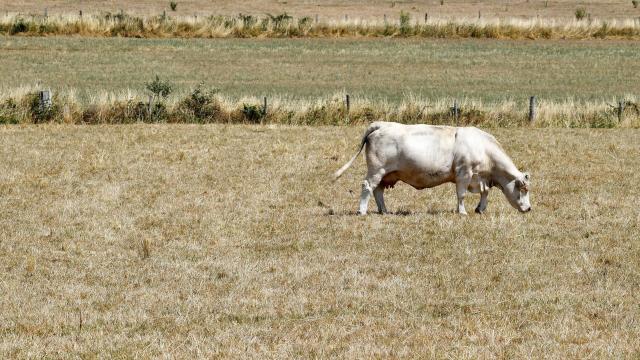The world’s grasslands are an essential carbon sink, and may even be more efficient at capturing atmospheric carbon than trees. But thanks to animal agriculture and fertiliser use, they’re now producing as much greenhouse gas pollution as they sequester, according to a new study published in Nature Communications on Tuesday.
Grasslands themselves are exceptionally resilient to the climate crisis. As the world has warmed, for instance, wildfires have become more frequent and more severe; when these fires strike forests, trees release the carbon they’ve sequestered over their lives. But when prairie land burns, carbon tends to stay safely trapped in the soil. Previous studies have also found that grassland plants and soil have adapted to increased greenhouse gas pollution in the atmosphere by sequestering more carbon, methane, and nitrous oxide.
But around the world, grasslands are also being converted into pastures to raise livestock for meat, eggs and milk, which is a problem for the climate, since cattle digestion produces planet-warming methane, and cows’ excrement also releases nitrous oxide, another greenhouse gas. The introduction of nitrogen-based fertilisers to grasslands’ soils has also caused them to emit more nitrous oxide into the atmosphere. According to the Food and Agriculture Organisation, animal agriculture is responsible for a whopping 14.5% of global greenhouse gas emissions. At the same time, breeding cows and other livestock degrades soil health and causes soil erosion — both of which inhibit the ground’s ability to store carbon.
In the new report, the researchers, who are based out of Austria’s International Institute for Applied Systems Analysis, quantified this impact for the first time by comparing grasslands that have remained completely or relatively untouched with those that have been used as livestock pastures. To do so, they created a model of all global prairies by plugging data from past literature into a computerised climate model known as Organising Carbon and Hydrology in Dynamic Ecosystems.
“This model is one of the first to simulate the regional details of land use change and degradation from livestock overload,” Jinfeng Chang, a professor of agricultural systems Zhejiang University in China who formerly taught at International Institute for Applied Systems Analysis and was the lead author on the study, said in a statement.
Indeed, they found that in 2012, global grasslands produced 2.5 times more methane and nitrous oxide pollution than they did before industrial agriculture became prevalent worldwide during the Industrial Revolution of the 18th century. This rise is mostly due to “increased livestock numbers, greater turnover of manure and, in some regions, mineral nitrogen fertiliser addition,” the researchers say.
As of 2012, wild prairies that have been used very little or not at all for grazing are sequestering enough of these two greenhouse gases to offset the impact. But trends toward soil degradation have the researchers worried.
“The recent trends we see towards the expansion of pasture land and higher livestock numbers lead us to expect that global grasslands will accelerate climate warming if better policies are not put in place to favour soil carbon increases, stop deforestation for ranching, and develop climate-smart livestock production systems,” Thomas Gasser, researcher at Austria’s International Institute for Applied Systems Analysis and co-author on the study, said in a statement. That means animal agriculture could destroy one of our best-available natural resources to curb global warming.
The study shows how urgently world leaders must act to preserve these crucial lands. To do so, they can enact regulations to protect more of them from grazing and restore them back to health. The stakes couldn’t be higher: If we don’t act, their massive carbon-sequestering potential will continue to be wiped out and likely eclipsed by animal agriculture. But if they are restored to good health, according to the U.S. Department of Agriculture, global grasslands could sequester approximately 3 gigatons of greenhouse gases per year, which is nearly a third of all the world’s carbon emissions.
So far, we’ve been moving in the wrong direction — in the U.S., for instance, just 5% of grasslands haven’t been degraded. But if we got our act together, it could make a world of difference.
